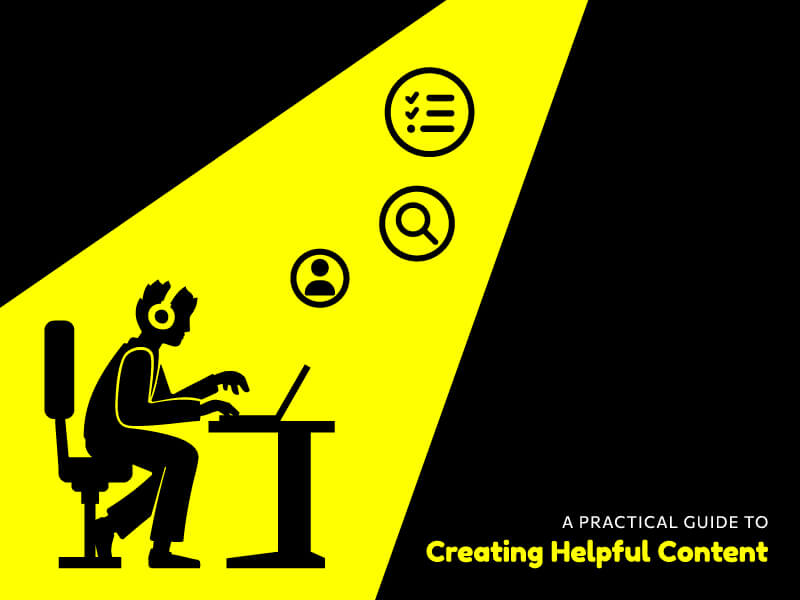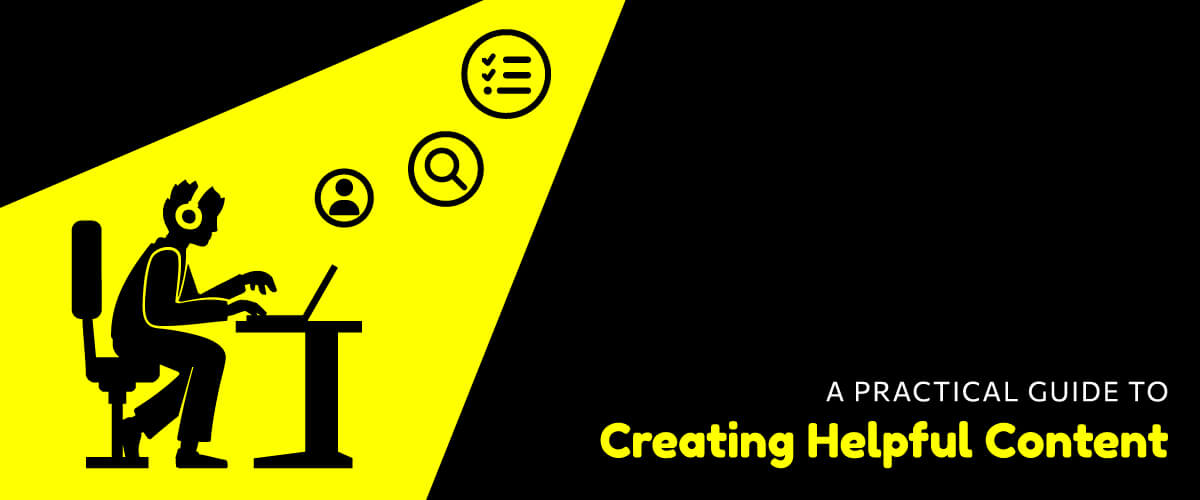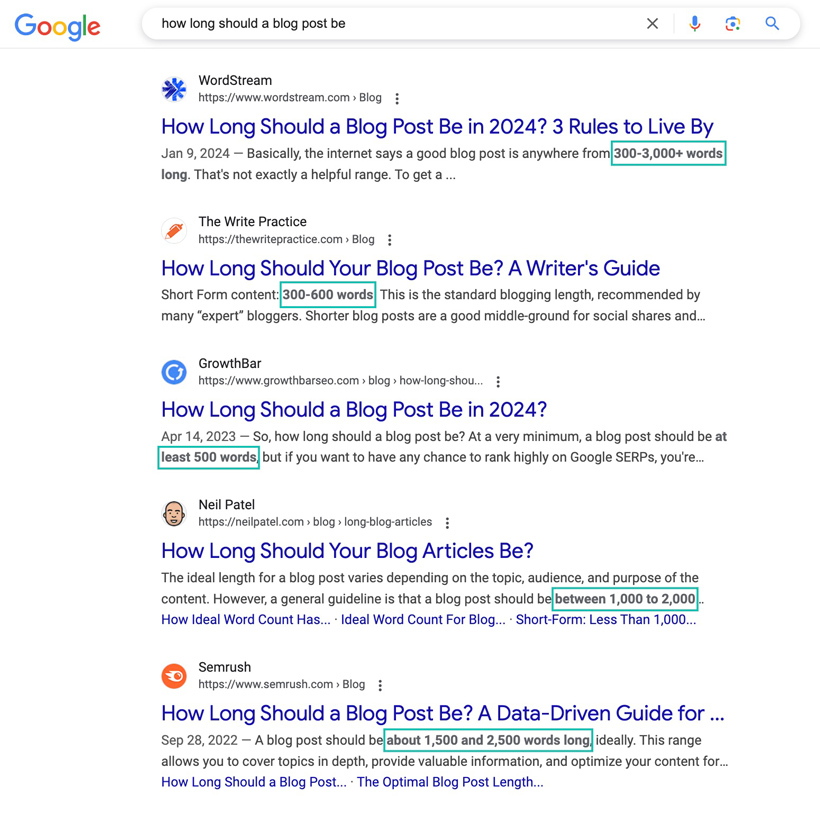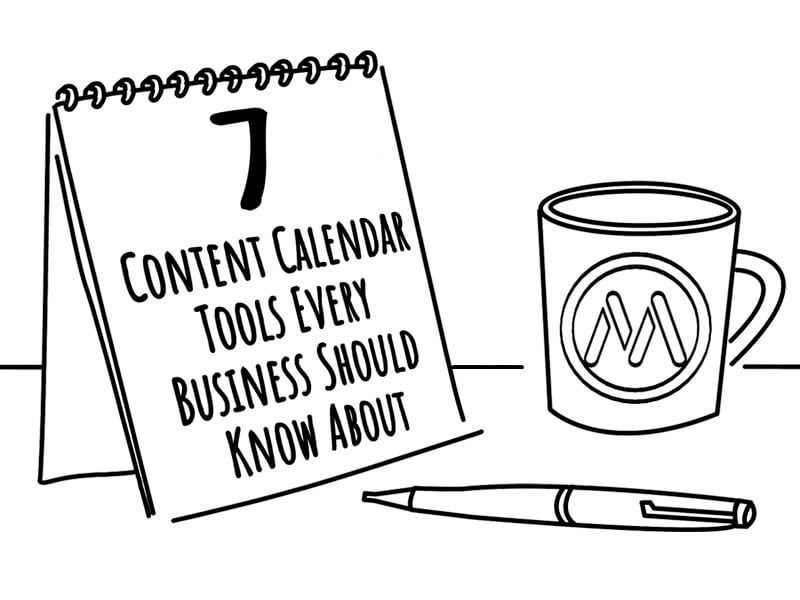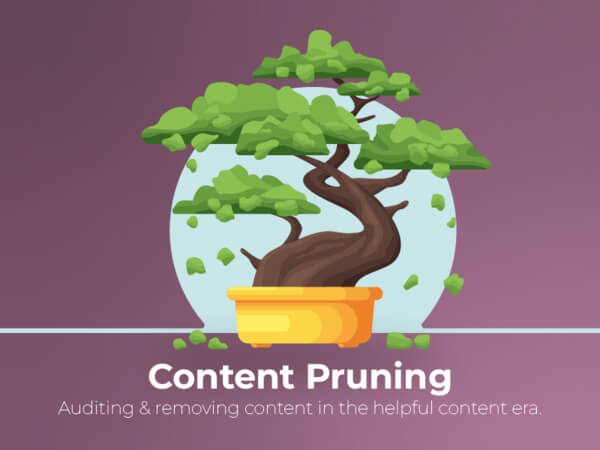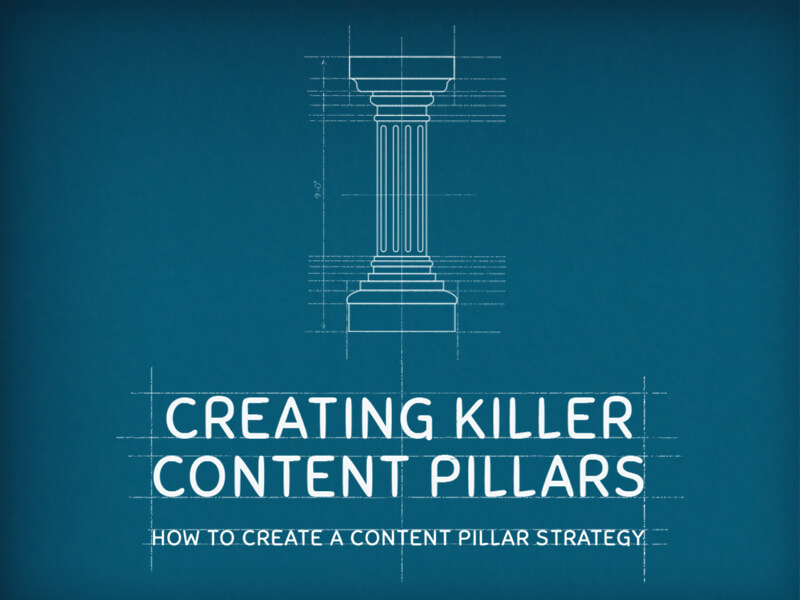It’s a daily topic of conversation around our (virtual) office—helpful content. We’re always looking for ways to grow and evolve our content creation process for not only our agency, but our clients. So, we’re constantly asking ourselves questions to better understand how we should be writing, like:
- How long should a blog post be?
- How many links are enough?
- Am I including too many links?
- Is this page too long?
- Is this topic good?
- Is anything that I’m writing good???
And there’s plenty to be said for making good content—Google themselves revealed that good content should be intellectual, sensorial, stimulating, and emotional.
But what makes content helpful?
That’s what we’re gonna find out. Here. Today. In this post.
But it’s best to start where it all began…
The Google Helpful Content System
The Google Helpful Content System has seen many iterations over the years, going from a simple update to actually becoming a part of Google’s core ranking systems.
Here’s a quick timeline of helpful content events:
August 2022 Google Helpful Content Update: A brand new update is released—the first of its kind—to prioritize original, helpful content in the search results.
December 2022 Helpful Content Update: Not long after the initial release, the helpful content update was brought to the global market and featured new signals that would help the search engine better identify content that was created strictly for ranking in search.
September 2023 Helpful Content Update: Google added new guidance around the helpful content system as a whole and rolled out an improved classifier. This update focused on improving how search results are ranked overall and helping the system better understand content that presents unique experiences and expertise.
March 2024 Core Update: The standalone updates end as the helpful content system is fully incorporated into the core update system. It seems like this core update fine-tuned the way Google understands a webpage. That includes not only assessing the helpfulness of the content on the page, but its overall user experience and whether it was created for people vs. search engines.
So now, there are multiple systems at work to help the search engine elevate and serve more genuine, helpful, authoritative results, and reduce lower-quality content in the search engine results page (SERPs).
Why We Write Helpful Content
So, with the helpful content initiative now baked directly into the core update system, Google is making it pretty clear that helpful content is a major focus in rankings. But don’t get it twisted—it’s still not technically a ranking factor. 🙄
But there are many reasons why we should be creating helpful content anyway.
- Nurture your community: Connect with your visitors, readers, and customers in a genuine way.
- Provide direction: Helpful content, when done correctly, can guide visitors (and potential customers) through the rest of your content or website. It can provide the exact right next step for them to learn more, find solutions, and even convert.
- Share personal experience: Personality and unique experiences in content are what bring people together and help to build trust. There is a reason why Google added a second “E” to their E-A-T criteria: Experience, Expertise, Authoritativeness, and Trustworthiness. First-hand experience is only becoming more and more crucial to include in the content you create.
- Build trust: Helping people answer their questions, discover solutions or even just find support in their community can build critical trust between your audience and your business.
- Improve SERP position: Obviously Google is going to love you for this.
- Grow your business: Genuine and helpful content across your site is one of the best ways to achieve sustainable growth.
What Can Helpful Content Be?
Blog posts, social media pages, digital resources, podcasts, videos, presentation decks, eBooks—the list goes on and on.
Anything you write, design, and speak can be considered helpful content if executed correctly.
Which is awesome because we all have the power to do so no matter our business size, industry or platform. But whatever channels you do decide to utilize, always make sure it aligns with your target audience and your community.
Helpful Content Checklist
Conversations with fellow digital marketing experts, a ton of research and my own personal experience of writing for a myriad of industries (including this marketing agency), have led me to compile what I think it takes to make content that is truly helpful.
Know Your Audience (Inside and Out)
When it comes down to it, helpful content can technically only be determined by the reader. Search engines will try to understand the best they can, but it’s the reader who is ultimately looking for answers.
So a vital key in creating helpful content is understanding who you are writing for: your audience.
Conduct Audience Research
You have everything you need to learn about your audience, you just have to know where to look. Take some time to dive into your own arsenal of data to review trends, interests and key aspects of your audience.
- Customer data and feedback: Review the current information you have on your customers throughout time. This gives you pain points and challenges your audience commonly faces and the solutions they find from your products or services.
- Social media and engagement: Do you notice certain content getting more impressions and engagement? This may help you understand your audience’s interests and priorities better.
- Content analysis: Take a look at your most popular pages—understanding where your audience is spending time on your website can give you direction for your content strategy.
- Competitor watch: The content that your top competitors are creating could help give you insight into your shared audience. How are people responding to it? Is there a lack of response?
- Create buyer personas: Establishing different buyer personas can be useful in gaining a deeper understanding of who you are trying to reach with your content and why.
Anticipate Searcher Intent
It doesn’t stop there however. Another important step in understanding your audience is understanding searcher intent.
This means learning about how your customers are using search. Are they searching broad terms or specific long-tail key phrases? Are they looking to buy or are they looking to learn?
By anticipating searcher intent, you can more easily provide the experience and the content that your audience is most looking for.
Focus on Your Reader (Not the Search Engines)
So many people are focused on writing to please the search rankings.
And yes, SEO is a vital part of yours and your clients’ digital marketing strategies, but it should never jeopardize the usefulness of your content.
People first, search engines second.
In case you forgot, you are a human being! When did we start acting like we were writing to some other entity when truly our audience is filled with people just like us?
And your audience is your audience because of your brand, voice, and aligned values. The more you are able to speak to them on a human level, the more they will feel connected and trusting of your business and what you have to offer.
Now that’s not to say you should toss SEO to the side—because SEO helps to create great content and is 100% necessary. But it should not take away from the flow of information to your reader and their experience on your website.
Put Audience Needs Over Promotional Needs
Speaking of writing for your audience…
It’s important to prioritize your audience’s needs over your organization’s sales or promotional message.
The informational needs of your audience outrank everything else and 66% of B2B marketers agree.
Too often are great articles ruined by in-your-face promos, pop-ups, or callouts every other paragraph.
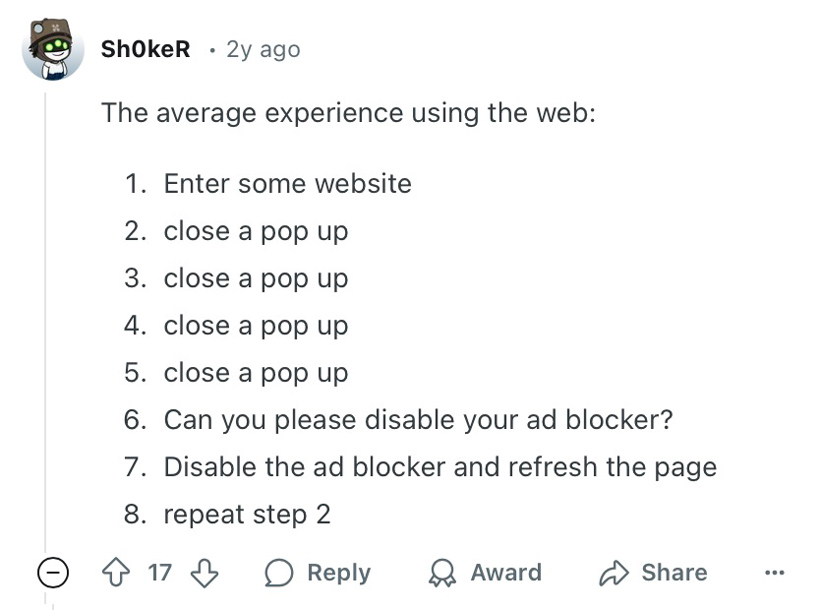
We get it. You have discounted services that will help them triple their bottom line or a product that will solve all their problems. And those things are great, and we’re happy for you.
However, your reader came here to read your article and those things can run the risk of ruining someone’s entire experience with your brand. If after reading they are able to find a solution with your product or service, then I’d say you made a great first impression!
But a lot of the time, helpful content is about building trust with your community, providing thoughtful resources, and creating a great experience for a potential customer at any stage of the buyer’s journey.
Write Content with Purpose
Helpful content will always have a purpose: to answer a question.
And I know what you’re going to say—this is content marketing basics. But the way we approach content has evolved. Writers are facing more and more pressure to rank for multiple keywords and magically have every piece of content go viral.
We arguably need to let that pressure go.
And as long as you are writing with a purpose to help your reader, then the content you create should inherently be helpful.
But it’s about making a genuine effort to educate, entertain and support them that takes your content to the next level.
Write to Educate
One of the main reasons we write is to educate our audience.
This can come in a few ways, like for example: the copy on your website. These words have the sole purpose of introducing your brand, values and products or services to a new visitor. Every page should be written with the intention of helping a potential customer solve their problem and make an educated buying decision.
Here’s a scenario: Oh god, my toilet backed up and there’s raw sewage everywhere (definitely not speaking from a personal experience…). Let me look for plumbers in my area, check their website for availability info, the services they offer, and what their process of helping customers looks like.
Oh wow, the website has just informed me that under no circumstances should I be trying to clean the sewage myself? Good to know!
Then there are the blogs, eBooks and additional resources that we create to educate our audience further.
We’re experts in our industry, right? Every resource should be crafted with the mindset of providing actionable advice to our community, giving them the answers they need in order to help themselves or make the decision to seek professional help (lol).
Write to Entertain
No one wants to read boring material. Why do you think I just wrote a paragraph about my toil—someone’s toilet backing up?
This is show biz baby—you have to provide the entertainment.
Not only is enjoyable content going to grab the attention of your audience, it’s going to keep them interested and locked in.
And in a crowded market where content is a plenty, writing to entertain can help your brand stand out, build genuine connections with your audience and effectively make your content more enjoyable to read.
Plus a personal anecdote can help make you, the author, more real. And from what we know, the Google Helpful Content System is technically on the lookout for those sharing unique experiences and real perspectives.
Write to Support
If your audience doesn’t feel supported, they’re going to go elsewhere. A reader should be able to feel your want to help them in every part of your writing.
Being able to convey that their problems and challenges are understood completely, and more importantly, are valid, is a huge green flag when creating helpful content.
Guides, how-to articles, and even a beautifully crafted informational page about tree stump removal* gives you the opportunity to support your reader, and point them in the right direction. Now hopefully that direction is to your products and services, but if not, the experience was still positive, and that above anything else should bring them back to you.
*This only works if you are an expert arborist.
Prove Your Credibility
Whether it’s your experience and expertise, studies, or statistics, your content is nothing without evidence to back up the points you’re trying to make.

So, what can prove your credibility? Linking to verified sources, including findings from your research, and providing your unique expertise can all help support your case.
And remember from earlier about why we write helpful content: people are looking for personal, first-hand experiences from content creators. That alone has the power to build trust and credibility with your readers.
I for one, as a digital marketer and long-time professional copywriter, who has created content for not only this marketing agency, but dozens of small businesses nationwide, approve this message.
Create a Positive User Experience
It’s wild… Sometimes the helpfulness of a piece of content can be completely wrecked by poor UX. When’s the last time you were thrilled with a pop up disrupting your reading every 30 seconds? Or what about staring down a huge paragraph with no breaks in sight?
Exactly.
Set Up a Solid Structure
Sometimes helpful content isn’t about the actual content at all. The structure of a post is crucial for user experience and overall accessibility.
Breaking things down into bullet points, lists, and even smaller paragraphs makes a daunting amount of content more friendly.
And if you use your headings wisely, you can help your reader find exactly what they’re looking for because we should all know by now—scannability is key.
According to HubSpot, only 27% of people fully read blog posts, while a whopping 73% admit to mainly skimming.
Prioritize Readability
Don’t write to hit a word count.
It’s just not necessary.
When I search “how long should a blog post be,” I’m served a million and one answers.
That to me seems like there’s no right answer, so why do we still get it in our heads that we need to write to a certain length?
Why is it that our word count haunts us in our sleep? No? Just me then…
Moral of the story is, the content you create should be long enough to answer the question you’ve asked. Nothing more, nothing less.
For example, a how-to guide on creating a content pillar strategy for your business—probably needs to be comprehensive and a bit lengthy.
However, a quick intro into Pinterest SEO is exactly that. A quick intro.
Follow Google’s Guidelines
It’s time to realize that Google is our friend and not our foe.
Though the resources, guidelines and updates they have created and continue to roll out can sometimes seem overwhelming, it’s actually Google themselves that are handing us all the right answers to succeed.
So where do you start? Well…
- Read up on Google’s guidelines for helpful content: Here you can find how to successfully assess your own content and how SEO and helpful content can work together.
- Stay up to date on Google core updates: Now that the helpful content system is a part of the core ranking system, it’s more important than ever to pay attention to update launches.
- Take advantage of the search quality rater guidelines: Though extensive, these guidelines can shed some light on how actual raters (those that give feedback on Google’s algorithm changes) assess good content.
- Familiarize yourself with E-E-A-T: As mentioned above, this stands for Experience, Expertise, Authoritativeness, and Trustworthiness. This is another concept, outlined in the search quality rater guidelines, that helps Google evaluate if they are serving helpful, relevant information in the SERPs. It could be very helpful to dig into this concept specifically in order to produce more helpful content.
What Helpful Content Will You Create?
Okay so here we are—I’ve done my best to educate, entertain and support you with some helpful content about helpful content. Now it’s your turn!
Just remember, when it comes down to it, helpful content is created when your only goal is to provide easily accessible information to your reader so that they can find a solution to their problem. It’s not fitting in keywords where you can, and it’s not pushing your product or service on them every step of the way.
Slow down, do your research and remember that you are speaking to people just like you or me. And if you need help creating helpful content for your business, you know where to find us. 😉

